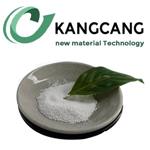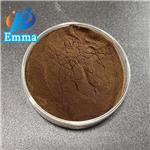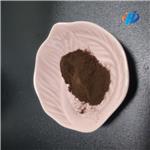Sodium lignosulfonate
- CAS No.
- 8061-51-6
- Chemical Name:
- Sodium lignosulfonate
- Synonyms
- SODIUM LIGNINSULFONATE;banirexn;SodiuM lignosulfante;LIGNOSULFONIC ACID, SODIUM SALT;CMN;nosuL;orzans;urzans;betz402;polyfon
- CBNumber:
- CB9282256
- Molecular Formula:
- C20H24Na2O10S2
- Molecular Weight:
- 534.51
- MDL Number:
- MFCD00135572
- MOL File:
- Mol file
| solubility | H2O: soluble |
|---|---|
| form | powder to crystal |
| color | Black |
| PH | 3.5 (10wt. %) |
| Substances Added to Food (formerly EAFUS) | LIGNIN SODIUM SULFONATE |
| FDA 21 CFR | 173.310; 177.1210 |
| EWG's Food Scores | 1 |
| FDA UNII | XY2KOA860T |
| EPA Substance Registry System | Sodium lignosulfonate (8061-51-6) |
SAFETY
Risk and Safety Statements
| Symbol(GHS) |  GHS07 |
|---|---|
| Signal word | Warning |
| Hazard statements | H319 |
| Precautionary statements | P264-P280-P305+P351+P338-P337+P313P |
| Safety Statements | 24/25 |
| WGK Germany | 1 |
| RTECS | OI6174000 |
| HS Code | 3804.00.1000 |
Sodium lignosulfonate price More Price(8)
| Manufacturer | Product number | Product description | CAS number | Packaging | Price | Updated | Buy |
|---|---|---|---|---|---|---|---|
| Sigma-Aldrich | 471038 | Lignosulfonic acid sodium salt average Mw ~52,000, average Mn ~7,000 | 8061-51-6 | 100g | $61.8 | 2024-03-01 | Buy |
| TCI Chemical | L0098 | Sodium Ligninsulfonate | 8061-51-6 | 25g | $36 | 2024-03-01 | Buy |
| TCI Chemical | L0082 | Lignin (Alkaline) | 8061-51-6 | 25G | $34 | 2024-03-01 | Buy |
| TCI Chemical | L0082 | Lignin (Alkaline) | 8061-51-6 | 500G | $67 | 2024-03-01 | Buy |
| TCI Chemical | L0045 | Lignin (Dealkaline) | 8061-51-6 | 25G | $36 | 2024-03-01 | Buy |
Sodium lignosulfonate Chemical Properties,Uses,Production
Water reducing agent
Lignosulfonate is a water-soluble multi-functional polymer electrolyte, belonging to a lignin sulfonate and having the capability of dispersion of biological slime, oxidizing iron scale and calcium phosphate scale. It can also form a stable complex with zinc ions and calcium ions.
Sodium lignosulfonate and calcium lignosulfonate are commonly used water-reducing agents in multifunctional concrete waterproofing agent. When water-reducing agent is added into concrete, the hydrophobic group of water-reducing agent will be adsorbed on the surface of cement particle while the hydrophilic group will be pointed to the aqueous solution to form a single molecule or multi-molecule adsorption film, making the cement particles be dispersed due to the rejection from the same surface charge, being released of excess amount of water between particles in order to achieve the purpose of water reduction. At the same time, due to lowering the water surface tension and the interfacial tension between the cement particles, while maintaining the same fluidity, it will correspondingly cause reduction in water consumption, and thus also play a role in water reduction. It can significantly reduce the hydration of concrete, reduce porosity and increase the density of concrete, thereby greatly improving the strength and impermeability of concrete.
Lignin sulfonate is a series of natural compounds of molecular weight of 1000~30000. It is produced from the wasted pulp after fermentation alcohol extraction, followed by the neutralization with alkali. There are mainly calcium lignosulfonate, sodium lignosulfonate and magnesium lignosulfonate, of which the most widely used calcium lignosulfonate, is made of pulp waste. This kind of water-reducing agent is rich in raw material with simple manufacturing process and low price, and is widely used in domestic, accounting for 80% of the total output of water reducing agent. But its effect is not very good with bleed air and retarding effect, belonging to the ordinary water reducing agent, and will yield excellent result if used in combination with strength agent.
The above information is edited by Andy from Chemicalbook.
Mechanism of action
Most of the water-reducing agent is surface-active agent. Therefore, the mechanism of sodium lignosulfonate is the effect of surface activity.
Surfactants are organic compounds whose molecules have both hydrophilic and hydrophobic groups. Hydrophobic groups are various alkyl or alkaryl groups; hydrophilic groups are typically salts capable of dissociating ions. Depending on the dissociation of the ions by the hydrophilic groups, the surfactants can be classified into anionic surfactants; cationic surfactants; amphoteric surfactants; and nonionic surfactants. When the surfactant is added into the aqueous solution, the surface tension (water-gas phase) and the interfacial tension (water-solid phase) of the water can be reduced, and the surface activity can be reduced. From the physical and chemical sense, the surface active agent refers to materials, when added to the aqueous solution, has its surface solution depth be greater than the depth of the solution itself, leaving the surface tension reduced.
After addition of the water reducing agent, lignosulfonate to the concrete, the water-repellent group of the water-reducing agent is directly adsorbed on the surface of the cement particles, and the hydrophilic group is directed to the aqueous solution, which makes up the adsorption film of single molecule or multi-molecule. In the case, the cement particles are repelled and dispersed due to the same charge on the surface, releasing from excess water between particles to achieve the purpose of water reduction. At the same time, due to lowering the water surface tension and interfacial tension between the cement particles, while maintaining the same fluidity, the corresponding reduction in water consumption, and thus also play an effect on water reduction.
Identification test
A. Preparation of 0.15g/L of the sample solution, the sodium test was positive (IT-28).
B. C. with "122".
Chemical properties
This product appears as brown powder or liquid with no special smell. It is non-toxic, being easily soluble in water and alkali. It undergoes precipitation upon coming across acid. Has a strong ability to disperse.
Uses
1,It is mainly used as cement water-reducing agent, leading to the diffusion of group of cement so that the water content is precipitated out, increasing its mobility, thereby reducing the mixing water, and saving cement. When being used in the formulation of the oil drilling pulp, it can be used to reduce mud viscosity and shear force to control the mobility of drilling mud. In this case, the inorganic mud and inorganic salt impurities remain in the suspension state in the drilling, preventing the mud flocculation. It also has prominent salt resistance, anti-calcium and high temperature resistance.
2,It can also be used as concrete water-reducing agent, oil drilling mud dispersant, printing and dyeing and so on
Production method
This is the same to the water reducing agent MY.
Calcium bisulfite pulping process: the sulfite or bisulfate contained in the pulp slurry binds directly with the hydroxyl contained in the lignin molecules to produce lignin sulfonate. 10% lime milk was added to the waste liquid and heated at (95 ± 2) ° C for 30 min. Have the calcium solution stand for a while and filter out the precipitate, wash with water and add sulfuric acid. Filtrate to remove calcium sulfate. Na2CO3 was then added to the filtrate to convert calcium lignosulfonate to sodium sulfonate. A reaction temperature of 90 ℃ is appropriate. After 2h of reaction, stand, filter to remove impurities such as calcium sulfate. The filtrate is concentrated, cooled and crystallized to obtain the product.
Take the papermaking waste liquid obtained from the alkali pulp as raw material. First add concentrated sulfuric acid to the waste solution to about 50%, stir for 4~6 h. And then use lime milk, sedimentation, filtration, beating and acid dissolving, add sodium carbonate for conversion, concentration and drying to get the final product. See 1 for details.
Take the waste liquid obtained from grass pulping method as raw materials. Methods is the same as 2.
Uses
Dispersing agent for dyestuffs, wax emulsions, pigments, water treatment and cleaners.
Uses
Binder for ceramics, dispersing agent for pigments and in water treatment, stabilizer for wax and O/W emulsions, and tanning agent.
General Description
Light tan powder.
Air & Water Reactions
Water soluble.
Reactivity Profile
An oxidizing acid. Oxidizing acids are generally soluble in water with the release of hydrogen ions. The resulting solutions have pH's of less than 7.0. Materials in this group react with chemical bases (for example: amines and inorganic hydroxides) to form salts. These neutralization reactions occur as the base accepts hydrogen ions that the acid donates. Neutralizations can generate dangerously large amounts of heat in small spaces. The dissolution of acids in water or the dilution of their concentrated solutions with water may generate significant heat. The addition of water acids often generates sufficient heat in the small region of mixing to boil some of the water explosively. The resulting "bumping" spatters acid widely. These materials have significant ability as oxidizing agents. but that ability varies (for example, from high for nitric acid to low for sulfuric acid and most sulfonic acids). They can react with active metals, including iron and aluminum, and also many less active metals, to dissolve the metal and liberate hydrogen and/or toxic gases. Like other acids, materials in this group can initiate polymerization in certain classes of organic compounds. Their reactions with cyanide salts and compounds release gaseous hydrogen cyanide. Flammable and/or toxic gases are also often generated by their reactions with dithiocarbamates, isocyanates, mercaptans, nitrides, nitriles, sulfides, and weak or strong reducing agents. Additional gas-generating reactions occur with sulfites, nitrites, thiosulfates (to give H2S and SO3), dithionites (SO2), and even carbonates: the carbon dioxide gas from the last is nontoxic but the heat and spattering from the reaction can be troublesome. Acids often catalyze (increase the rate of) chemical reactions.
Fire Hazard
Flash point data for Sodium lignosulfonate are not available. Sodium lignosulfonate is probably combustible.
Sodium lignosulfonate Preparation Products And Raw materials
Raw materials
1of3
Preparation Products
| Supplier | Tel | Country | ProdList | Advantage | |
|---|---|---|---|---|---|
| airuikechemical co., ltd. | +undefined86-15315557071 | sales02@airuikechemical.com | China | 994 | 58 |
| Hebei Kangcang new material Technology Co., LTD | +8619133911216 | Jany1001@kangcang.com.cn | China | 338 | 58 |
| Ouhuang Engineering Materials (Hubei) Co., Ltd | +8617702722807 | admin@hbouhuang.com | China | 343 | 58 |
| Henan Tianfu Chemical Co.,Ltd. | +86-0371-55170693 +86-19937530512 | info@tianfuchem.com | China | 21695 | 55 |
| Hefei TNJ Chemical Industry Co.,Ltd. | +86-0551-65418679 +86-18949832763 | info@tnjchem.com | China | 2989 | 55 |
| Shanxi Naipu Import and Export Co.,Ltd | +86-13734021967 +8613734021967 | kaia@neputrading.com | China | 1011 | 58 |
| career henan chemical co | +86-0371-86658258 | sales@coreychem.com | China | 29914 | 58 |
| SHANDONG ZHI SHANG CHEMICAL CO.LTD | +86 18953170293 | sales@sdzschem.com | China | 2931 | 58 |
| Hebei Guanlang Biotechnology Co., Ltd. | +86-19930503282 | alice@crovellbio.com | China | 8822 | 58 |
| Xiamen AmoyChem Co., Ltd | +86-592-6051114 +8618959220845 | sales@amoychem.com | China | 6387 | 58 |
View Lastest Price from Sodium lignosulfonate manufacturers
| Image | Update time | Product | Price | Min. Order | Purity | Supply Ability | Manufacturer | |
|---|---|---|---|---|---|---|---|---|
 |
2024-04-19 | Sodium lignosulfonate
8061-51-6
|
US $5.00 / kg | 1kg | 98% | 20ton | Hebei Kangcang new material Technology Co., LTD | |
 |
2024-04-18 | Sodium lignosulfonate
8061-51-6
|
US $100.00-30.00 / kg | 1kg | 99.3% | 1 ton per week | Ouhuang Engineering Materials (Hubei) Co., Ltd | |
 |
2024-04-18 | Sodium lignosulfonate
8061-51-6
|
US $50.00 / kg | 1kg | 99.10% | 50000kg | Ouhuang Engineering Materials (Hubei) Co., Ltd |
-

- Sodium lignosulfonate
8061-51-6
- US $5.00 / kg
- 98%
- Hebei Kangcang new material Technology Co., LTD
-

- Sodium lignosulfonate
8061-51-6
- US $100.00-30.00 / kg
- 99.3%
- Ouhuang Engineering Materials (Hubei) Co., Ltd
-

- Sodium lignosulfonate
8061-51-6
- US $50.00 / kg
- 99.10%
- Ouhuang Engineering Materials (Hubei) Co., Ltd




